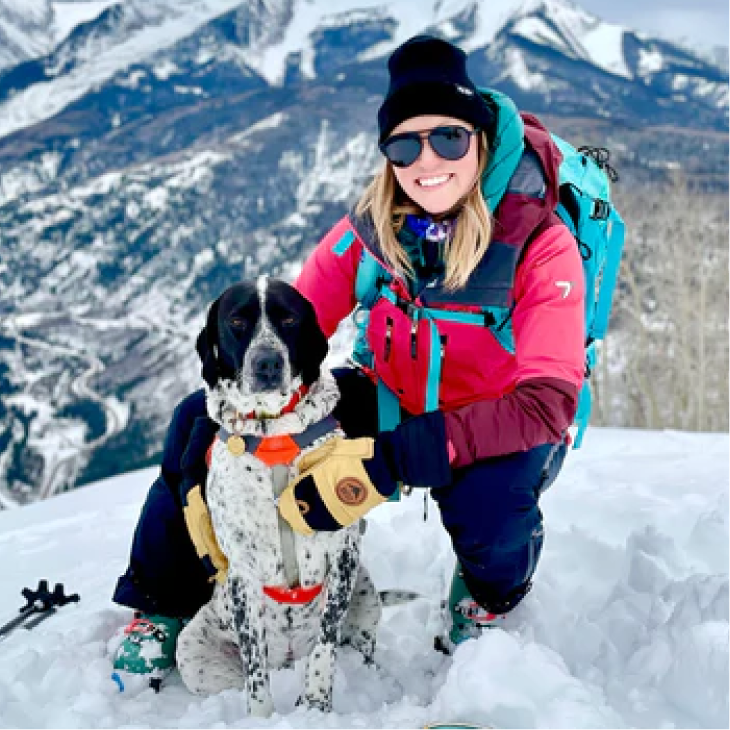The adage that you get what you pay for, whether it's shoes, cars, or housing materials, also holds true with regard to gloves for outdoor enthusiasts. Whether you’re a mountain climber, skier, snowboarder, or simply a cold-weather all-around enthusiast, the right gloves are critical for both performance and your overall well-being. Great gloves can help preserve the feeling in your fingers and reduce chances of frostbite and damage, but they don’t come cheap.
Article Topics
The Effect of Cold Weather On Your Fingers
The most well-known effect of prolonged exposure to sub-freezing temperatures is frostbite, but before that occurs, there’s still damage that happens to your fingers when you’re enjoying winter weather.
Cheap gloves can pose a risk in many sports, especially climbing, which relies on nimble fingers. Good gloves don’t just have the right grip built into the fabric – they also insulate your fingers from the cold to allow you to maintain your grip yourself.
What does the cold actually do to your hands?
In sub-freezing temperatures, your body seeks to protect itself, preserving body heat and blood flow to the core and reducing heat loss by minimizing the effort to warm the extremities – hands, feet, arms, and legs. It begins by constricting the blood vessels in the skin and deeper dermis layers, reducing the blood volume to the skin and, therefore, heat loss.
With the blood flow shifted proximally to the vital organs, the body physiologically "amputated" far extremities such as the hands by drastically reducing blood flow. Finally, the body automatically increases its metabolic heat production rate through involuntary shivering or intentional exercise and movement.
When your hands are exposed to long periods of cold temperatures, the body’s natural protections cause your hands to lost manual dexterity and increase your risk of cold injury.
If your hands are exposed to the cold for extended periods of time, these three factors combine, causing them to lose manual dexterity and be at risk of cold injury. These include:
- Skin freezing or frostbite, which can lead to gangrene or hypothermia
- Loss of dexterity or delayed response to intentional commands
- Cold contact risk, wherein your fingers come in contact with other cold surfaces, including your gear, things outside, or cold surfaces, which can result in even more damage than just cold air
Protecting yourself while outdoors means protecting your hands. When you purchase cheap gloves, you may be trusting your life to their performance.
Key Features of Great Winter Gloves?
Understanding what makes a great winter glove great can help you when you’re looking at dozens of different styles and brands. It can also help you discern the difference between a cheaply made glove and a quality one - it's not always strictly about price.
Waterproof and Breathable
Let’s get this out of the way first: there is no 100% waterproof material for winter sports gloves. However, there’s a range of water resistance, and keeping your hands dry means keeping them warm. Once your gloves are wet, especially if you’re in an area with wet snow, your hands get cold and damp and stay cold and damp, accelerating cold damage.
Specially engineered textiles are created to allow more breathability and may be more water-resistant through the nature of the material itself, repelling water from the surface. Breathability reduces the collected moisture inside the gloves and keeps your hands warm yet dry and comfortable.
Insulation
Insulation keeps your hands warm, but beyond that, different types of insulation work best for different people and different activities. Thicker insulation is best for skiers in the coldest temperatures or people who get cold very easily. Down is a popular option, especially for drier climates, since it loses its insulating properties when it gets wet. The best insulation allows vapor to pass through the material (breathability). Synthetic insulation is increasingly high-tech, combining durability with the warmth and a tight weave that increases mobility while wearing the glove.
Lining
Lining creates a comfortable feel and protects the insulation, typically crafted from synthetic materials with moisture-wicking properties.
Fit
Gloves that are too big allow too much air between the glove and the hand, requiring more body energy to keep your hands warm. Plus, the synthetic materials used for insulation and lining often depend on a close fit to the hands and fingers for maximum effectiveness. If your gloves are too big, you can’t get a good grip on your poles or other gear either, which can affect your performance and even be a safety hazard.
Gloves that are too small also limit the range of movement, so when you’re trying on gloves, practice picking up different things in the store or gripping objects. Properly fitting gloves allow you to pinch about a quarter of an inch of fabric at the end of the fingertip. Well-made gloves are designed with the articulation of the hand and fingers in mind, technology that cheaper glove makers may not employ.
Additional Features
Great gloves are engineered to perform best for different sports. For example, many snowboarders may prefer mittens, while rock and mountain climbers may need gloves with a slim profile and precise dexterity.
Some gloves have features for both comfort and convenience, such as small zippered pockets to add a hand warmer in frigid weather or grips and reinforcements in the areas that get the most use, such as the palm thumb or fingertips. Many have a wrist loop attached to the cuff for easy removal without losing a glove. Other fun features include a mini squeegee to help keep your goggles clear or soft nose wipes for a drippy nose.
Why Quality Doesn't Come Cheap
If you've noticed that we’ve mentioned synthetic materials designed especially for cold weather, combining performance, breathability, and warmth, you may already have clued into why good gloves don’t come cheap. Research and development of the best insulators and materials to protect your hands can be expensive, and high-tech materials aren’t the cheapest.
Beyond the quality of the materials is the precision design of many high-end ski gloves like BAIST. Our company has a proprietary design for our gloves, created through real-life use and constant innovation. We incorporate leading-edge materials designed to withstand even the coldest temperatures, always improving the wearer's safety and performance. In addition to the full-fingered glove system, BAÏST also has a mitt system and trigger glove system. The gloves are rated from -20°F to 45°F and the Mitt System is rated down to -40°F.




Leave a comment
All comments are moderated before being published.
This site is protected by hCaptcha and the hCaptcha Privacy Policy and Terms of Service apply.